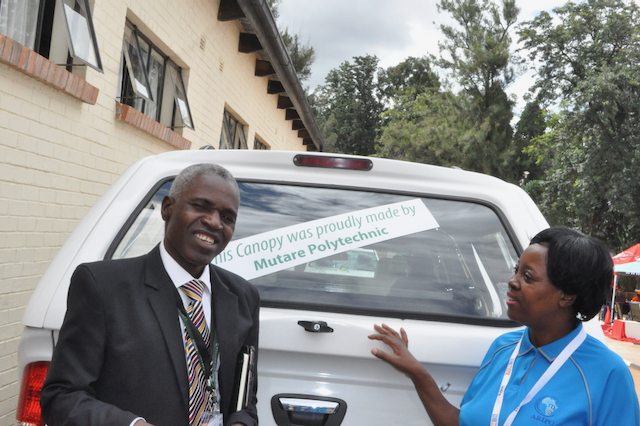In the various exhibitions ARIPO has participated in, both Zimbabwe and elsewhere in the Member States, it has always been heartening to observe that universities and colleges are getting more creative and innovative. They are producing new products, which, if commercialized, may bring returns to the institutions and solve some of Africa’s very basic challenges.
Realising this potential, ARIPO deliberately embarked on a series of roving seminars targeted at universities in the Member States to help capacitate the institutions to produce more goods and services that would help their communities. In Zimbabwe, the government revamped the country’s higher and tertiary education sector from a three-pillar to a five-pillar model called Education 5.0 comprising research, teaching/learning, community engagement, innovation, and industrialization. This came about after seeing the potential role that the institutions could play in the projected turnaround strategy of the country’s economy, premised on the ambitious target of becoming a middle-income economy by the year 2030.
Under this model, the utilisation of scientific and technological knowledge is central. To ARIPO and other patent offices, it becomes critical to place the value of patent information in all these positive efforts by the Government of Zimbabwean and every other government in the Member States of ARIPO and Africa with a similar vision.
Apart from using the patent system to seek the protection of their intellectual property rights, universities can also use it to seek prior art and state-of-the-art information concerning the innovations they are working on. However, researchers have dishearteningly revealed that in most African institutions, the realisation of the role of patent information and documentation is the missing link. Universities must therefore be encouraged to use patent information in their research and innovation projects to avoid the wasteful habit of reinventing the wheel. By their nature, universities are the most fertile grounds for utilizing patent information for their research efforts. Using patent information will help them know those products that may no longer be protected and thus freely available for exploitation. If they are protected in their territories, it helps them avoid infringements and litigation from the owners.
Innovation literature, however, underrepresents the importance of using patent information for promoting and nurturing the culture of innovation and creativity in developing countries. Therefore, there is a need to promote and improve access to and disseminate information on the usefulness of patent information in innovation and technology transfer among African universities. Using patent information can inspire today’s university students to be more creative and innovative. As Africa grapples with the social challenges of poverty, hunger, disease, and unemployment, it is critical that policies get more focused on innovation and creating homegrown products and solutions, of course with access to how others have created theirs.
It was with this intention that ARIPO embarked on roving seminars that were targeted at universities. It is not surprising that the government of the Republic of Zimbabwe embraced this initiative and has come up with a new Higher Education curriculum that requires each university to come up with products that address the most basic of the daily challenges of their communities. As a result, all the universities have established innovation hubs from which numerous projects of prominence have started. Among these are the TapCard system that was adopted by the country’s public transport company, production of organic fertilizer, a partnership with the local electricity supply and distribution company to repair and recondition electricity transformers, which in the past the company was sending to India for their repairs and reconditioning. Furthermore, after the onset of the COVID-19 pandemic, the local universities became instrumental in producing the much-needed sanitizers, face masks and PPEs. A local polytechnic in Zimbabwe also partnered with a local car assembly to produce canopies for the cars they assembled. To boost the quality of the national cattle herd, another university has successfully established a project to harvest semen from selected breeds of bulls to sell to cattle farmers for artificial insemination.
The work for ARIPO is thus well cut out. These universities and other tertiary institutions need to be well fostered to appreciate the use of the patent system not only to protect their products, but also to learn how others have done it before them. As Africa reignites its innovative and creative capability, all players including patent libraries, must disseminate this valuable information and knowledge now, more than ever before, to the budding innovators and creators in the higher education sector.

